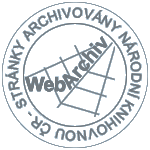Profese online 2017, 10(1):8-14 | DOI: 10.5507/pol.2017.002
Development and evaluation of content validity knowledge questionnaire for patients with diabetes mellitus
- 1 Katedra ošetřovatelství, Fakulta zdravotnických studií, Univerzita Pardubice, Česká republika
- 2 3. interní klinika 1. lékařské fakulty Univerzity Karlovy a Všeobecné fakultní nemocnice v Praze, Česká republika
- 3 Katedra klinických oborů, Fakulta zdravotnických studií, Univerzita Pardubice, Česká republika
- 4 IDE CR s. r. o., Česká republika
Background: Currently in the Czech Republic there is lack of questionnaire that would verify the level of knowledge of patients with diabetes. Such a questionnaire is needed because the numbers of diabetic patients are increasing and need to be able to evaluate the effectiveness of the implementation of education, which is staffed and very time consuming. The questionnaire assessing patient knowledge is one of the ways you can evaluate the effectiveness of education.
Aim: The aim was to create a knowledge questionnaire for people with diabetes. The objective was to propose major themes, areas and specific items of the newly formed knowledge questionnaire, to assess the content validity of the proposed main areas of proposed specific questionnaire items and individual parts of the entire questionnaire.
Methods: For questionnaire creation itself and for assessing its content validity was established cooperation with 12 field experts. On the basis of this cooperation through research methods Delphi, the study literature and publications have been proposed major themes of the questionnaire, its main areas and specific items. Content validity was evaluated by calculating the content validity index.
Results: The final version of the questionnaire is made up of four main topics, regions 16 and 53 items. Content validity index (CVI) for each area of the questionnaire ranged from 0.50 to 1.00, for each item in the range from 0.33 to 1.00. CVI for each part of the questionnaire (S-CVI/Ave) ranged from 0.90 to 0.98.
Conclusion: The newly created measurement tools to assess knowledge in patients with diabetes was assessed as highly valid content. In the next step of research will be examined further psychometric properties of the questionnaire and its comprehensibility for respondents.
Keywords: content validity, questionnaire, knowledge, diabetes mellitus
Accepted: April 2017; Prepublished online: April 2017; Published: April 2017 Show citation
References
- Pelikánová T, Bartoš V, et al. Praktická diabetologie. Praha: Maxdorf; 2011.
- Jirkovská A, et al. Jak (si) kontrolovat a zvládat diabetes: Manuál pro edukaci diabetiků. Praha: Mladá fronta; 2014.
- Data o diabetu v ČR. Www.diabetickaasociace.cz [Internet]. Praha: Diabetická asociace ČR, 2014 [cited 2016 Dec 30]. Available from: http://www.diabetickaasociace.cz/co-je-diabetes/data-o-diabetu-v-cr
- Zvolský M. Činnost oboru diabetologie, péče o diabetiky v roce 2013 [Internet]. Praha: Ústav zdravotnických informací a statistiky ČR, 2015 [cited 2016 Dec 30]. Available from: http://www.uzis.cz/rychle-informace/cinnost-oboru-diabetologie-pece-diabetiky-roce-2013
- Škrha J. Cesta diabetologie aneb jak vše začíná a končí: průvodce pro každodenní praxi. Praha: Maxdorf; 2014.
- Trunček J. Management znalostí. Praha: C.H. Beck; 2004.
- Eigenmann CA, Skinner T, Colagiuri R. Development and validation of a Diabetes Knowledge Questionnaire. Practical Diabetes International [Internet]. 2011 [cited 2014 Feb 27]; 28(4):[166-70 p.]. Available from: http://web.a.ebscohost.com/ehost/detail/detail?vid=6&sid=bf487490-846e-4343-977a-cef6fcffd52b%40sessionmgr4006&hid=4209&bdata=Jmxhbmc9Y3Mmc2l0ZT1laG9zdC1saXZl#AN=104694500&db=rzh
 Go to original source...
Go to original source... - Fitzgerald JT, et al. The reliability and validity of a brief Diabetes knowledge test. Diabetes Care [Internet]. 1998 [cited 2017 Feb]; 21(5):[706-10 p.]. Available from: http://web.a.ebscohost.com/ehost/detail/detail?vid=9&sid=bf487490-846e-4343-977a-cef6fcffd52b%40sessionmgr4006&hid=4209&bdata=Jmxhbmc9Y3Mmc2l0ZT1laG9zdC1saXZl#AN=107275424&db=rzh
 Go to original source...
Go to original source...  Go to PubMed...
Go to PubMed... - Speight J, Bradley C. The ADKnowl: identifying knowledge deficits in diabetes care. Diabetic Medicine [Internet]. 2001 [cited 2016 Nov 15];18 (8):[626-33 p.]. Available from: http://web.a.ebscohost.com/ehost/detail/detail?vid=4&sid=bf487490-846e-4343-977a-cef6fcffd52b%40sessionmgr4006&hid=4209&bdata=Jmxhbmc9Y3Mmc2l0ZT1laG9zdC1saXZl#AN=5183939&db=a9h
 Go to original source...
Go to original source...  Go to PubMed...
Go to PubMed... - Garcia AA, et al. The Starr Country Diabetes Education: Development of the Spanish-language diabetes knowledge questionnaite. Diabetes Care [Internet]. 2001 [cited 2017 Feb 27]; 24(5): [16-21 p.]. Available from: https://search.proquest.com/docview/223070560?accountid=17239
 Go to original source...
Go to original source...  Go to PubMed...
Go to PubMed... - Urbánek T, Denglerová D, Širůček J. Psychometrika: Měření v psychologii. Praha: Portál; 2011.
- Chráska M. Metody pedagogického výzkumu: Základy kvantitativního výzkumu. Praha: Grada Publishing; 2007.
- Polit DF, Beck ChT, Owen SV. Is the CVI an Acceptable Indicator of Content Validity? Appraisal and Recommendations. Research in Nursing & Health [Internet]. 2007 [cited 2016 Aug 15]; 30(4):[459-67 p.]. Available from: https://www.researchgate.net/publication/6185294_Is_the_CVI_an_acceptable_indicator_of_content_validity_Appraisal_and_recommendations
 Go to original source...
Go to original source... - Plevová I, et al. Management v ošetřovatelství. Praha: Grada Publishing; 2012.
- Polit DF, Beck ChT, Owen SV. Is the CVI an Acceptable Indicator of Content Validity? Appraisal and Recommendations. Research in Nursing & Health [Internet]. 2007 [cited 2016 Aug 15]; 30(4):[459-67 p.]. Available from: https://www.researchgate.net/publication/6185294_Is_the_CVI_an_acceptable_indicator_of_content_validity_Appraisal_and_recommendations
 Go to original source...
Go to original source... - Šmahelová A, Lášticová M. Diabetologie pro farmaceuty. Praha: Mladá fronta a. s.; 2011.
- Bastable SB. Nurse as educator: Principles of Teaching and Learning for Nursing Practice. Ontario, Canada: Jines and Bartless Publishers; 2008.
- Mandysová P. Příprava na edukaci v ošetřovatelství. Pardubice: Univerzita Pardubice; 2016.
- Haynes SN, Richard DCS, Kubany ES. Content Validity in Psychological Assessment: A Functional Approach to Concepts and Methods. Psychological Assessment [Internet]. 1995 September [cited 2016 Oct 1];7(3):[238-47 p.]. Available from: https://pdfs.semanticscholar.org/402f/0f1eca459139d141eeac5298958fd7557483.pdf
 Go to original source...
Go to original source... - Kozel R, Mynářová L, Svobodová H. Moderní metody a techniky marketingového výzkumu. Praha: Grada Publishing; 2011.
This is an open access article distributed under the terms of the Creative Commons Attribution 4.0 International License (CC BY 4.0), which permits use, distribution, and reproduction in any medium, provided the original publication is properly cited. No use, distribution or reproduction is permitted which does not comply with these terms.



